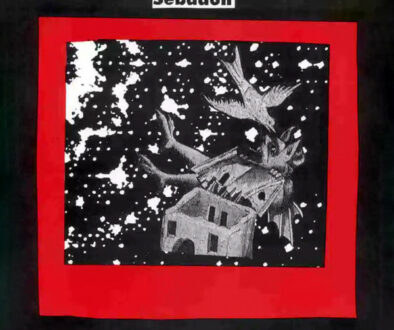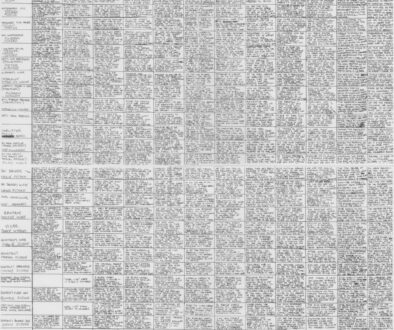Live With The Contradictions (Book Three, Part 6: Animal Rights, Psycho Pirate)
Previously in The Last War in Albion: Grant Morrison’s Animal Man contained frequent political issues, particularly ones focused on issues of animal rights.
Sometimes you can’t live with the contradictions, Grant. —Alan Moore, as quoted by Grant Morrison

Arguments against animal cruelty rooted in a sense of animal rights reach into antiquity. The Pythagoreans argued for vegetarianism based on the fact of animal suffering, while animal rights based arguments in Indian culture date as far back as the 8th century BCE. More contemporaneously, the 19th century led to Richard Martin helping to form the Royal Society for the Prevention of Cruelty to Animals in 1824, while philosophers like John Stuart Mill and Arnold Schopenhauer made ethical arguments for the legitimacy of animal rights.

Come the 1960s and animal rights began to mingle with the rapidly fomenting political radicalism, commingling with the larger environmentalist movement in the form of things like Greenpeace’s anti-whaling protests. In the UK people opposed to blood sports like fox hunting formed the Hunt Saboteurs Association and embraced direct action, sabotaging hunts and sparking increasingly fraught confrontations with hunters. In 1972 an offshoot group, the Band of Mercy, itself a precursor to the Animal Liberation Front. This group embraced even more militant tactics, most infamously arson and raids on farms and laboratories. These increasingly radical strains of activism coalesced in 1973 when philosopher Peter Singer published an article in which he coined the phrase “animal liberation,” expanding the notion in 1975 to a full-length book in which he critiqued the idea that animals have a lesser degree of rights than humans as “speciesism.” Singer went on to argue for the non-voluntary euthanasia of disabled children.

Among those influenced by Singer’s book was Ingrid Newkirk, who in 1980 helped found People for the Ethical Treatment of Animals. In 1981, working with members of the Animal Liberation Front, the group shot to national prominence in 1981 when they brought attention to the conditions of lab monkeys in a lab in Silver Spring, Maryland. They quickly became known for their ostentatious and eye-catching tactics like their “I’d Rather Go Naked than Wear Fur” campaign, in which celebrities posed for tasteful nude photographs to protest the use of fur. This deliberately confrontational approach did exactly what was intended: to garner attention, including that most effective form of it, controversy. Indeed, the animal rights movement was generally good at this, with its steadfast moral condemnation of everyday activities like eating dinner or wearing boots and its insistence on radical, fundamental change to day to day life.

For Morrison’s part, the thing that radicalized them was being “horrified by harrowing scenes from the animal rights documentary The Animals Film, and a single viewing was enough to bring about my conversion to vegetarianism.” This film was famously aired by Channel 4 in 1982 on its third day of transmission, with cuts demanded by the Independent Broadcasting Authority on the grounds that scenes could “incite crime or lead to civil disorder.” As Channel 4’s contract with the filmmakers forbade them from making cuts, meaning that they had to go back and negotiate exactly how to handle it. The result was that the film opened with an introduction describing the deleted scenes, increasing the film’s already potently brutal depiction with a frisson of the forbidden.

All of this helps to explain Animal Man #15, a one-shot in which Animal Man takes on whale and dolphin hunting in the Faroe Islands. It is a gloriously and shamelessly polemical, pulling no punches in its depiction of the traditional hunts, depicting them as blood-soaked orgies of brutality. “It goes on for a long time… screaming… blades grinding against spines. People carving their names into the faces of terrified dolphins, hacking of the flukes for souvenirs. And the children… the men cut fetuses from the bodies of pregnant dolphins and give them to the children to play with.” The story’s climax, meanwhile, sees the leader of the hunt facing down an activist and screaming “This is what I think of your environmentalism! This! And this! And this!” as he repeatedly stabs a baby dolphin.

At this point, just as Morrison is about to lose control of their narrative and see the story cross from “enthusiastically polemical” into “tediously moralizing,” they pull back and make a stunningly deft deployment of their ability to do an Alan Moore imitation. Animal Man swoops down and grabs the whaler, flying up into the sky and dropping him to his presumptive death. And then Morrison shifts to the narration of a dolphin that has been threaded poignantly through the issue, who earlier found their mate murdered by the man. Lettered in lower case with no punctuation beyond breaks in the caption boxes, the dolphin describes their lover’s killer “thrashing / desperately attempting to climb to the skin of the world / blood stains his body his clumsy awkward body / thrashing / stains his frail body cradle of delicate bone stains his electrics spit and flash terror / the world is crushing him putting out the light of his body / he took everything stained with my family everything / thrashing / he will enver make it back alive / he will die here/ here in the world stained with our blood / he will die”. The next page moves to the shore, where the man crawls from the sea, looking back confused and astonished as the dolphin swims away. “One day the world will exist no more agony no more fear in all the vast enfolding of time and the world / one day / until then the killing will continue the bloodspilling slaughter of innocents / until ten there will be aggression and pain and sadness / that is the way / that is the way of the sad hu-men / our way is different”. It is an ending of grace, mercy, and poetry, not undermining the furious of the earlier politics but augmenting them and deepening them, honing them into something even more powerful.

Morrison returned again to the well of overt politics for Animal Man #17. But this time there was something tangibly different about it. It was not simply that, unlike issues #13 and #15, this was not a self-contained one-shot isolated from Morrison’s larger plots, instead furthering long-running threads such as whoever it was that sent the Mirror Master to harass Animal Man preparing another strike and, in the issue’s closing page, the mysterious James Highwater finally coming to meet Animal Man. Rather, it was that the thunderous righteousness that had characterized their earlier political engagements was gone, replaced with a conciliatory and milquetoast gesture at moderation. The story opens with Animal Man participating in a raid on a laboratory in which monkeys are being caged with their eyelids sewn shut. As Buddy retreats, taking the monkeys to safety, one of his comrades douses the lab in gasoline and lights it on fire. As the issue goes on, it is revealed that the fire became a chemical fire, which injured three firemen, one of whom was in critical condition. This sets off a rash of moralizing, all of it weighing against the stances Morrison had spent almost a year and a half advocating for. Animal Man’s wife scolds that “those people you’re hanging out with are dangerous. They don’t want to help animls. They just want to hurt people.” His friend Roger scolds him, “you don’t have conversations anymore, you give lectures!” Later Animal Man melts down in a TV interview, shamed for his unwillingness to answer a question about whether he’s broken the law. As the issue ends, he denounces the activists from the beginning, declaring that “I’m not a soldier. I won’t be a solider.”
It is not that this newfound ambivalence is straightforwardly wrong; at best the ethics of eco-terrorism and burning down labs can be described as murky. It’s just that it’s so shockingly mealy-mouthed coming off of so many issues of Morrison spitting glorious fire. Perhaps this was always Morrison’s plan. Certainly they talked about their intention to gradually up the stakes so that “People will be cheering him along for a while and then they’ll realise ‘this guy’s gone a bit too far…’” But in the same interview they noted that “sometimes I think even the most extreme acts are acceptable. I suppose if they were being done to me I wouldn’t.” But the issue has the overwhelming feeling of an issue drenched in editorial interference. Its specific sort of drab moderation—the way it falls over itself to avoid taking a stand that might be objectionable to anyone at all—feels more like the company that had just sacked Rick Veitch from Swamp Thing over “Mourning of the Magician” than like the rising enfant terrible of the industry. Morrison has said that “There were only two stories that I couldn’t do. One was a really radical animal rights story. It was probably a bit over the score in terms of violence and shock-value for DC. And there was another crazy 60s plot which didn’t happen – although I was able to bring bits of it back later on.” The latter of these was a story called “The Mod-Gorilla Boss of Central City,” which would have run in Animal Man #7 and revived the villain from Strange Adventures #201; Morrison has never specified where the other one would have landed, but it’s hard not to suspect Animal Man #17 is the smoldering wreckage of that effort.
Whatever the particulars of how Animal Man #17 came to be the way it was, in its wake Morrison began to wind down their run on the series. This did not mean righteously storming off the book; they stayed on almost another full year. Nevertheless, Animal Man #17 marked the last issue in which Morrison did something that was not primarily concerned with advancing the series towards its conclusion and resolving the looming plot about the nature of Crisis on Infinite Earths that they’d been threading throughout the series.

This began with a two-part story in which James Highwater finally met Animal Man and took him out to a mesa on the Hopi reservation in Arizona to drop peyote and, guided by a talking fox that introduces itself as Foxy, have a series of psychedelic visions about the nature of the universe, culminating in Buddy turning so that he looks up from the page straight at the reader and, in one of the iconic splash pages of Morrison’s career, exclaims in astonished horror, “I can SEE you!” His opportunities to engage with the implications of this realization, however, are limited by the issue cliffhanger in which he returns home to find that his entire family have been brutally murdered.

This development was, of course, a far cry from Morrison’s frequent proclamations in interviews that “reality doesn’t necessarily have to be so grim and gritty. The only grit in my life is the stuff in the cats’ litter tray, and I’m not really keen on this new cliché that equates ‘reality’ with people leading grim and terrible lives.” Here, however, they were brutally murdering their hero’s family, then spending an entire issue with his grief and another in which he extracts brutal revenge on the people responsible. This, however, saw Morrison begin to tip their hand about what they were actually doing with this plot thread. Instead of revenge offering any sort of justice or satisfaction, Buddy ends the issue covered in blood, curled up in a ball on the floor, clearly dissociated. “I feel… nothing,” he says. “I’ve done terrible things and they’re still dead. Ellen. Cliff. Maxine. I feel nothing.” Morrison was still rejecting the grim and gritty aesthetic, but they were by this point doing it by showing its failures, allowing its logic to reach the collapse Morrison had by early 1990 been arguing for years was inevitable.

As this played out in the foreground, Morrison used the background to position pieces for their denouement, setting up the classic structure of a mounting crisis, or indeed, as the title of Animal Man #23 made clear, a Crisis. As Psycho-Pirate unleashes a wave of forgotten and erased characters into Arkham Asylum and the very fabric of reality begins to fray, Animal Man chats with Phantom Stranger, the Immortal Man, and Jason Blood over the nature of life and death, finally deciding it’s time to push past his grief and be a superhero again, concluding the issue by dramatically striding into Arkham and proclaiming, “It’s okay. I’m here.”

There is much here of interest. Perhaps most obvious, in terms of the way in which it defined Morrison as a writer, was simply that they were so enthusiastically diving straight at the mess of continuity that Crisis on Infinite Earths had left. Marv Wolfman had left Psycho-Pirate as a clear loose thread in that comic, positioning the character as an undo button placed prominently on the final page in case some future DC editor decided they wanted to undo the series. And the result of it was that nobody touched the idea. Shortly after Crisis on Infinite Earths Roy and Danette Thomas used Psycho-Pirate in Infinity Inc, but went to lengths to reset him to a sane persona that didn’t remember the multiverse. He made another appearance in 1988, still lacking any multiversal knowledge. And then following Morrison’s use of him, he disappeared for five years where, again, he did not mention the Multiverse. After that came another six year gap before someone other than Morrison finally had the character acknowledge the multiverse, and then he sat on the sidelines again until it was time to build to Infinite Crisis in 2005 and its decision to finally press the long mooted undo button.
That is, essentially, a twenty year period in which Grant Morrison was the only person bold enough to do anything with what was self-evidently one of the biggest ideas in DC continuity. [continued]





May 6, 2021 @ 4:01 am
Your Doom Patrol thoughts will belong in a museum (one hopes).
May 6, 2021 @ 3:23 pm
I feel like you’re rushing through this a bit. I hope that in the final version, you’ll expand a little more.
— The “I SEE YOU!” scene is indeed iconic, and it’s also a pretty key turning point in Morrison’s career — and, arguably, in the War. Morrison had dabbled in breaking the fourth wall before, but this is the first time he clenched, swung, and punched right through.
Was this the first such break within the text of superhero comics? I can’t think of an earlier one offhand.
— Taking peyote: was this issue Comics Code approved? [checks] Nope, guess not. Interesting. Was the entire run non-CCA? Also, was this before or after Morrison’s famous Nepal experience?
— There’s an entire issue devoted to Buddy’s grief and it is actually pretty hard to read. (Also, it ends with him getting ready to commit suicide out of sheer misery, which… I think might have been another superhero comics first?) Truog’s art is actually really good here, especially the repeated fades in and out of blackness.
— “I put on leather; old stuff from when I was a punk. Dress in the dead skin of animals. Calling on the animal powers.” HELLO. Morrison, former punk, is about to enter a period of dressing himself variously and curiously, including cross-dressing, as part of his magickal self-education.
— This whole run has Morrison bouncing back and forth between riffing on Moore, hommaging Moore, flat-out ripping off Moore, and doing his own completely new thing. In the “flat-out ripping off” category, I’d put the revenge issue — it’s very close to a cut-and-paste of the next to last issue of Moore’s Swamp Thing run, where he hunts down and creatively kills the Sunderland employees who “killed” him and took him away from Abby. It even has the exact same pattern. Four kills: three nobodies, then the guy most immediately responsible.
— Except! As you correctly note, the end of the issue takes it emotionally and thematically in a completely different direction. Moore gives us the revenge fantasy; the villains were evil, they deserved to die. Swamp Thing gives them grisly but appropriate deaths straight out of good old EC comics, and that’s the whole story. Morrison has Buddy doubly traumatized. He’s explicitly rejecting the revenge fantasy, which has been one of the pillars of superhero comics literally since Action Comics #1, and which had become a particular staple during the 1980s.
— The lines the Psycho-Pirate quotes are from Ishtar’s invasion of the Underworld in Mesopotamian mythology. Best guess is that Morrison got them from “Mythology of the Microcosm” by Brian Lasater.
— “Down Among the Dead Men” is straight from Moore, as is the Phantom Stranger as a helper and guide, and of course we get a couple of pages of Jason Blood being gothic. And Swamp Thing makes a one-panel appearance in the time travel issue, and… yeah, the glimpse of Overman’s world? It’s pretty much straight out of That Issue of Miracleman.
— McCulloch’s not a Flash villain here, and he pretty much steals the show in the revenge issue. He’s minor but he’ll recur. Morrison likes this character.
— The time travel issue! Come on! This was AMAZING stuff. This issue blew my mind when I read it, and it has stayed with me for 30+ years. Buddy’s grief and determination and despair are all note-perfect, as is the description of the futility of deterministic / can’t-change-the-past time travel. It’s a tour de force.
— Also, note that Morrison had clearly been looking forward to this issue since… what, issue #5 or so? Whenever ghost-Buddy first showed up. A year and a half, in real world time. He’d repeat this several times, with Invisibles and Batman, but this was his first time doing it — and I /think/ it was the first time anyone had done it, at least in superhero comics.
So while it’s possible that editorial interference may have triggered the onset of Morrison’s final arc, that arc had clearly been plotted out literally years in advance.
(Also, the horrible guest art in this issue shows us just how much Chuck Truog actually had going on.)
— On a quick reread, I notice Morrison playing with insect motifs — the repeated appearance of butterflies (representing hope and renewal) and flies (nothing good). Insect symbolism will continue to pop up in his work for a long time to come.
— Finally, can we just note here that Dolphin was a fellow Forgotten Hero, foreshadowing not only the return of the minor characters a few issues later but also his abiding fondness for obscure DC history — something he’ll carry on with right up to the present day.
Doug M.
May 7, 2021 @ 12:06 pm
Doug, I’ve got nearly 18,000 words on Animal Man alone. Expansion is not, shall we say, my priority.
August 6, 2022 @ 10:31 am
In Morrison’s own “Supergods” they credit the first major fourth-wall break that inspired them in the The Flash n.163 with the Flash’s “Stop! Don’t pass up on this issue, my vife depends on it!” towards the reader, although that was technically only the cover.
May 7, 2021 @ 11:52 am
A general comment.
You’re going with the metaphor of a War. Okay. Well, if you’re going to talk about War, I invite you to extend the metaphor a little bit and think about force structure.
Force structure is the sum of all the different ways a combatant brings force to bear in war. It’s most commonly thought of in terms of weapon systems, but it’s bigger than that. All conflicts involve differences in force structure, but the most interesting and iconic ones usually involve dramatic differences. Like, one bunch of armored knights taking on an almost identical bunch of armored knights? Not that interesting. But armored Crusaders taking on Saladin’s fast-moving horse archers? That’s must-see TV.
Legion vs. Phalanx. Heavily armed GIs vs. pajama-clad Viet Cong. 400 redcoats vs. 10,000 Zulus. World War I is boring to read about because it’s identical mass armies just grinding it out. World War II is interesting to read about because one side has blitzkrieg and V-2s and Tiger tanks and jet fighters and U-boats, and the other side has the Royal Navy and Bletchley Park and the Red Army and mass production and the Manhattan Project. Asymmetric warfare is just inherently more interesting.
So… what’s the difference between the two sides of your War? Not just what are they trying to accomplish, but what are the different means that they’re using? Because it definitely feels like asymmetric warfare of some sort.
Doug M.
May 7, 2021 @ 12:02 pm
A good observation, but three or four volumes too early. (Moore hasn’t even realized he’s a magician yet, after all.)